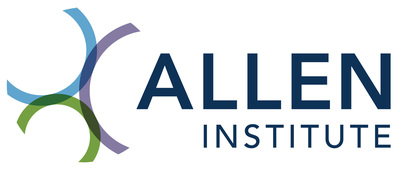Delving into the science of a mystifying optical illusion: visual masking
By Rachel Tompa, Ph.D. / Allen Institute
SEATTLE, Nov. 13, 2023 /PRNewswire/ — A new study out today in Nature Neuroscience on visual masking sheds light on how we unsee things and points to how conscious perception is generated in the brain.
In a phenomenon known as visual masking, individuals don’t consciously perceive an image if another image is shown in quick succession. But the timing of those images matters. The first image needs to flash on and off fairly quickly, and the second image needs to follow rapidly (on the order of 50 milliseconds) for the masking to work.
Shawn Olsen, Ph.D., an investigator at the Allen Institute, and his colleagues delved into the science behind this optical illusion and showed for the first time that it happens in mice too. After training mice to report on what they saw, the team was also able to pinpoint a certain region of the brain that’s necessary for the visual masking illusion to work.
“This is an interesting observation, where what is present in the world is not accurately reflected in your perception,” said Olsen. “Like other visual illusions, we think that it tells us something about the way the visual system works and ultimately about the neural circuits that underlie visual awareness.”
Scientists discovered this strange phenomenon in the 19th century, but why and how the human brain does this remains a mystery.
The study narrows down the parts of the brain responsible for awareness of the world around us, said Christof Koch, Ph.D., a meritorious investigator at the Allen Institute, who led the study along with Olsen and Sam Gale, Ph.D., a scientist at the Allen Institute.
When the rain of photons impinges on our retinas, the information takes a prescribed path from our eyeballs through several different regions of the brain, ending in higher processing areas of the cortex, the wrinkled outermost shell of the brain. From previous studies of visual masking, scientists know that neurons in the retina and parts of the brain early in that pathway are activated even when a person is not aware that they’re seeing an image. In other words, your brain is seeing things without your knowledge.
To explore where unconscious sensation turns into conscious perception and action, the scientists first trained 16 mice to turn a tiny LEGO wheel toward the direction of a quickly flashed image in exchange for a treat if they chose the correct direction. The scientists then added a different masking image on both sides of the screen, directly following the target image. With the addition of the mask, the animals could no longer do the task correctly—implying they were no longer aware of the original, target image.
Because visual masking had never been tested in mice before, the research team had to create the task for them, meaning the images and how they were shown differed from those used in previous human studies. To confirm that the optical illusion they showed the rodents is relevant to us, the team also tested it in 16 people (the wheel replaced by keystroke). Human perception (or lack thereof) and mouse perception of this specific visual masking illusion turned out to be very similar.
That result means that conscious perception is happening either in the visual cortex or in higher areas of the cortex downstream of it. That fits with the general sentiment in the field that the cortex is the seat of conscious perception in mammals, including us, Koch said.
About the Allen Institute
The Allen Institute is an independent, 501(c)(3) nonprofit research organization founded by philanthropist and visionary, the late Paul G. Allen. The Allen Institute is dedicated to answering some of the biggest questions in bioscience and accelerating research worldwide. The Institute is a recognized leader in large-scale research with a commitment to an open science model. Its research institutes and programs include the Allen Institute for Brain Science, launched in 2003; the Allen Institute for Cell Science, launched in 2014; the Allen Institute for Immunology, launched in 2018; and the Allen Institute for Neural Dynamics, launched in 2021. In 2016, the Allen Institute expanded its reach with the launch of The Paul G. Allen Frontiers Group, which identifies pioneers with new ideas to expand the boundaries of knowledge and make the world better. For more information, visit alleninstitute.org.
Media Contact
Peter Kim, Sr. Manager, Media Relations
[email protected]
![]() View original content to download multimedia:https://www.prnewswire.com/news-releases/new-study-sheds-light-on-how-our-brains-perceive–or-fail-to-perceive–what-we-see-301992748.html
View original content to download multimedia:https://www.prnewswire.com/news-releases/new-study-sheds-light-on-how-our-brains-perceive–or-fail-to-perceive–what-we-see-301992748.html
SOURCE Allen Institute

Featured image: Megapixl © Udra11



